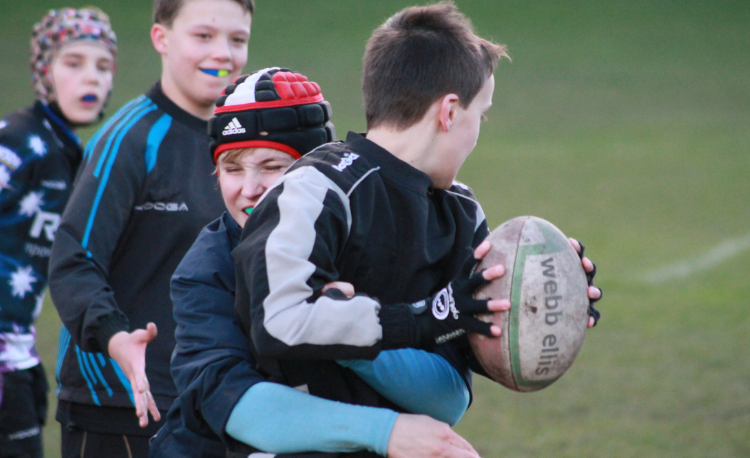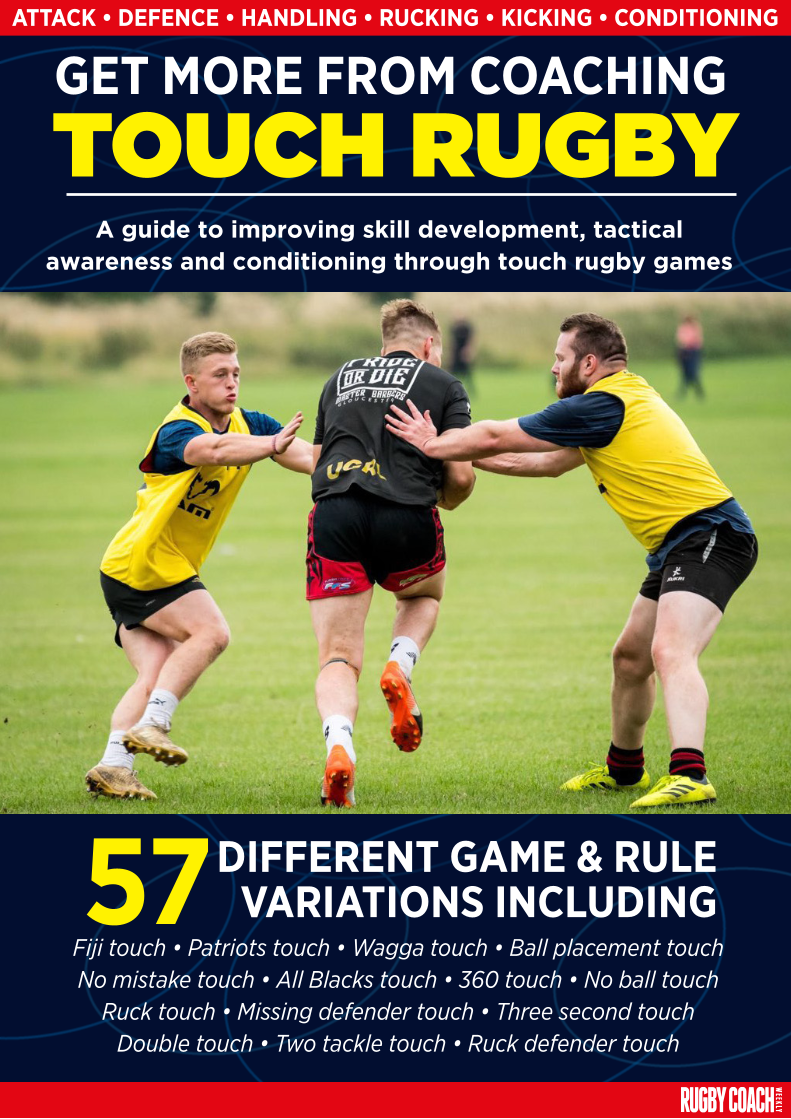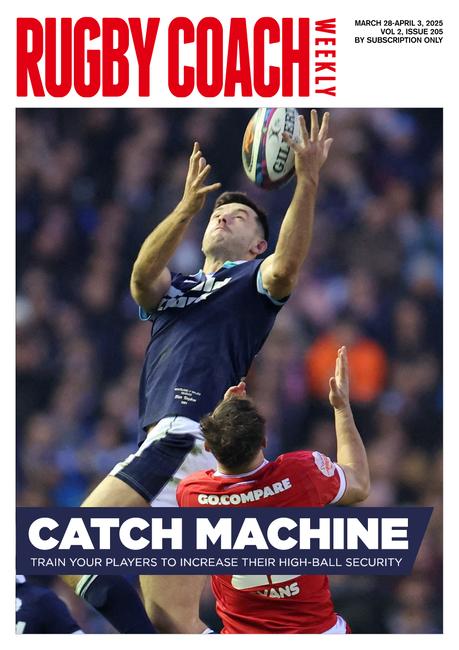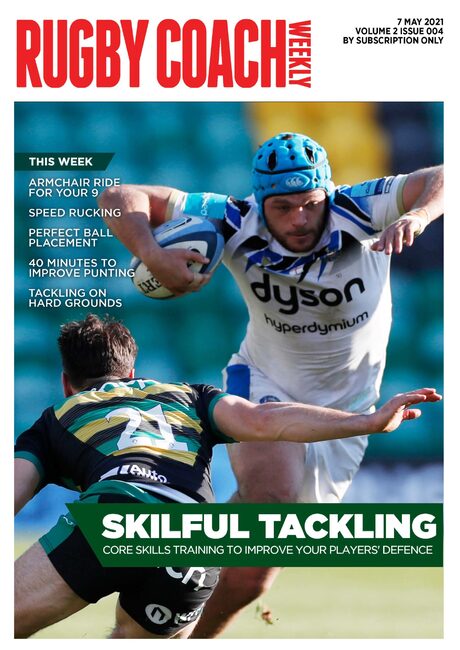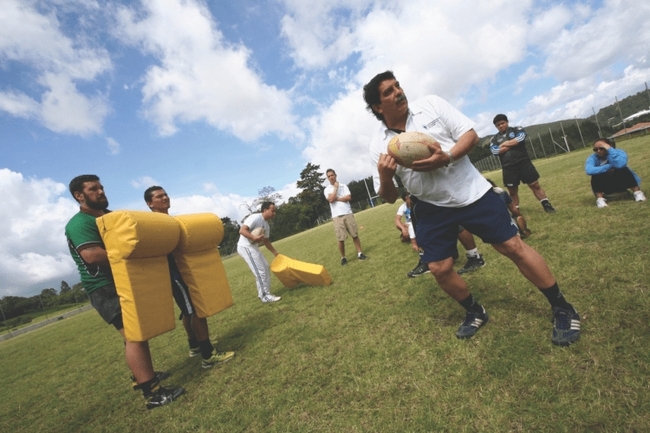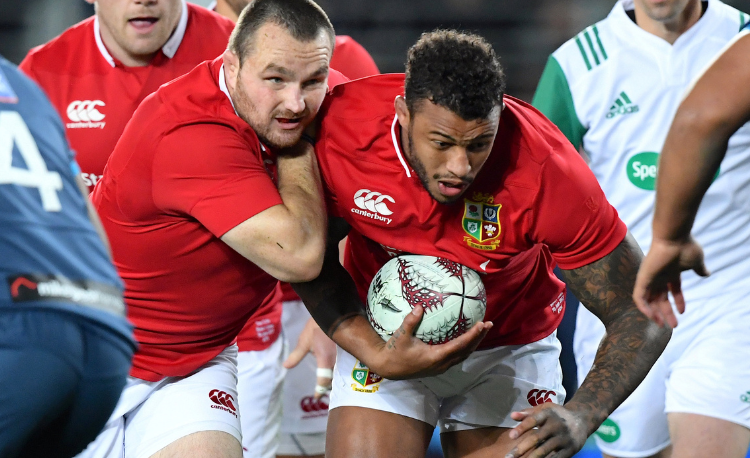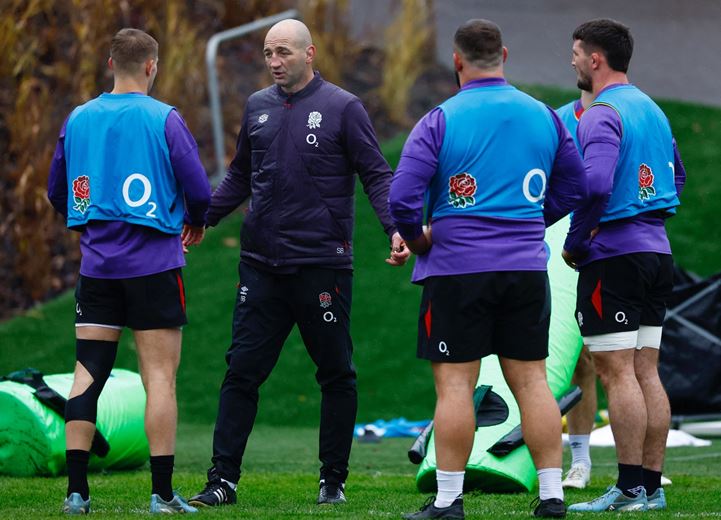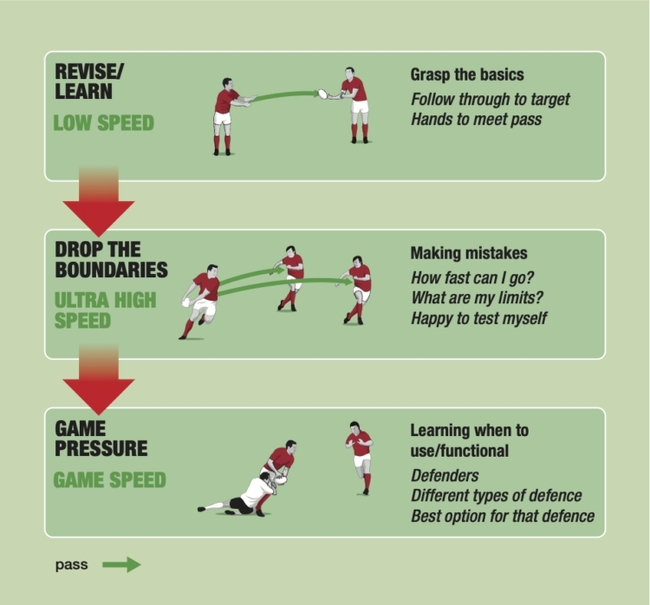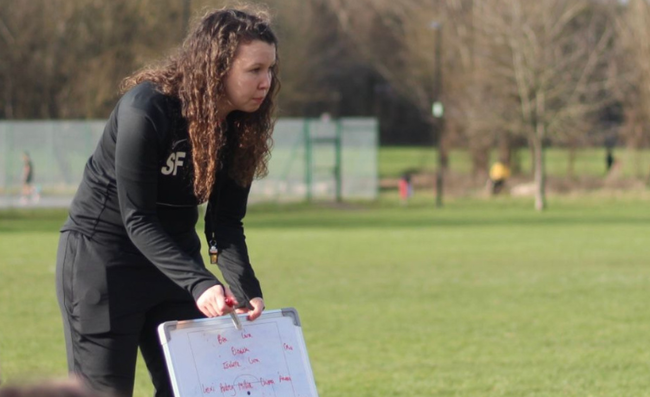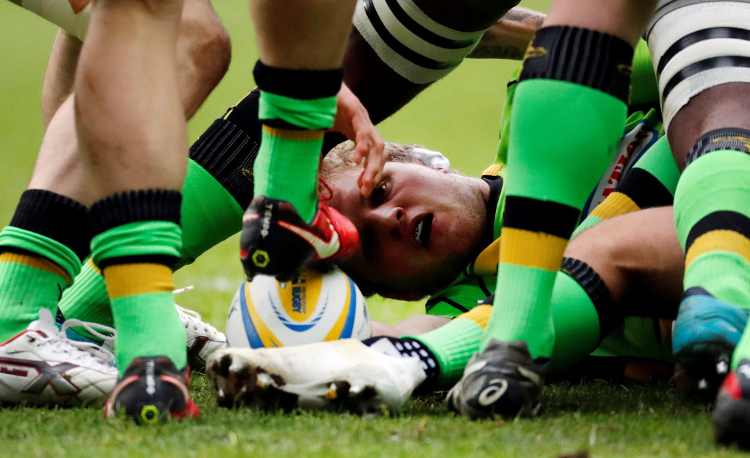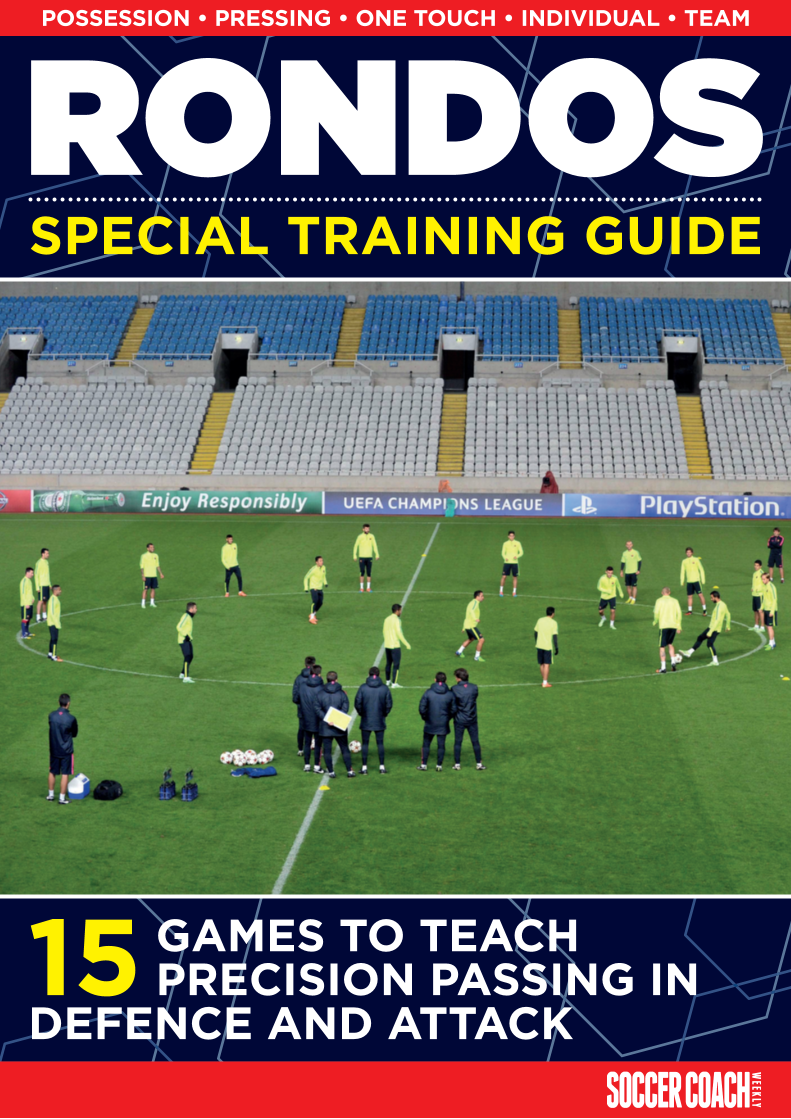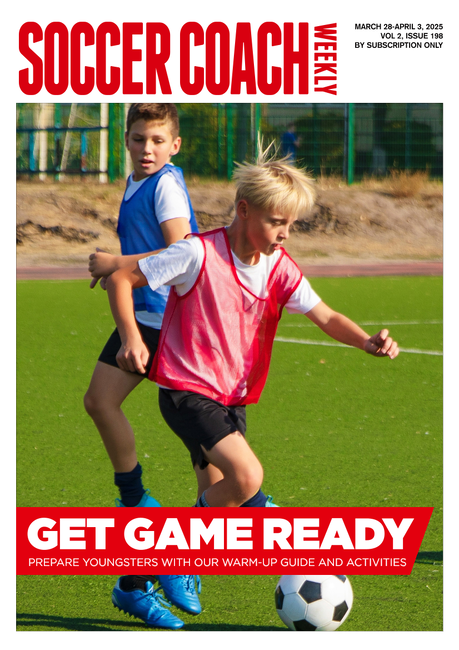Turning tackling into defence with games
The more realistic we make practices, the more likely it will translate into match performance. So, let’s consider how to integrate tackling into training games...
Whisper safety first
All contact skills must be practised in a safe, controlled environment. The better prepared players are, the lower their risk of injury.
Safety and good technique go hand in hand. By consistently practising correct technique under pressure, players develop strong habits that naturally create a safer playing environment.
However, repeatedly emphasising a technique is ’safe’ can have the opposite effect – making players question whether everything else is dangerous.
Instead, focus on creating the right environment, progressing skills at the right pace, and reinforcing sound technique. When this is done well, there’s no need to talk about safety – it becomes ingrained in how the game is played.
Overstressing safety can make nervous players even more hesitant, causing them to shy away from contact or fail to brace properly, increasing the risk of injury. Build confidence through preparation, and safety will take care of itself.
Takeaways
- Good technique is safe technique
- Don’t scare the players by talking about safety, just practise safely
Make ’real’ real
In live match situations, there is a huge variety of tackles to be made and missed. You can’t hope to train each one in isolation over the whole season.
The players need the key principles in place, and then to find ways to solve each tackle problem as they arise.
In training games, you can create various possible tackle scenarios. A player may be faced with a different angle or player in each.
However, you must temper the scenarios so the players are not compromised. For example, “tackling bulldog” – with a group of attackers running across a box, where any defender can tackle any of these players – isn’t productive. It’s also dangerous.
Real games that turn tackling into defence allow the two defenders to tackle one attacker, and reduce the instances of 1v1 tackles. For developing players, you can use an overloaded game, where there are more defenders than attackers – or, to keep the sides even, play ’Two-In’ (see below).
Takeaways
- Games create more scenarios than drills
- Play real games for defence, where there’s only one ball, so only one focus
Grab tackle rugby
England and Wales allow grab tackles as legitimate tackles at U9s. You can use this as part of your defence training in games, whatever the age.
Instead of full tackles, you can say that a player who is grabbed has three seconds to pass the ball. A player who is grabbed by two defenders loses possession.
Don’t allow interception passes, or the tackler to grab onto the ball. A grab is with both arms, and not by just holding the shirt.
To make the players think and adjust, make the pitch a rectangle (something like 20m x 30m). Alter the direction of play, so that, sometimes, double tackles are easy and, at other times, the defence will be more stretched.
As the game goes on, you can add in a rule where a tackle to ground means a turnover if the ball carrier can’t pass within three seconds. This rewards the better tacklers.
Takeaways
- Reward ’defence’ with turnovers for double tackles
- Build up contact confidence with grab tackles to start
’Two-in’
- Play six- to nine-a-side. The attacking team starts with two players on their knees, facing up the pitch. The defence uses this as an offside line. An attacker rolls a ball between the two players on their knees and then passes.
- Play tackling rugby – but, if a tackle is completed, shout "Tackle". The ball carrier must present the ball, and not pass it. The attacking team can’t pass the ball until two attackers have crossed over the ball on the ground. The next player must pass the ball away.
- This all means the defending team will always have at least two extra players on their feet to come forward to tackle. If only one player makes the tackle, they then have three extra.
- The attacking team has an incentive to pass before contact, or get players over the ball quickly. If the defence starts to become too successful, you can allow the attacker who picks up the ball to run or pass, not just pass. Finally, you can make the game just ’one-in’.
- The defence can turn over the ball with the pressure they exert. A further rule could be that if they put together two double-tackles in a row, they automatically turn over the ball.
- Always restart the game with two attackers on their knees.
Related Files
Newsletter Sign Up
Coaches Testimonials
Subscribe Today
Be a more effective, more successful rugby coach
In a recent survey 89% of subscribers said Rugby Coach Weekly makes them more confident, 91% said Rugby Coach Weekly makes them a more effective coach and 93% said Rugby Coach Weekly makes them more inspired.
Get Weekly Inspiration
All the latest techniques and approaches
Rugby Coach Weekly offers proven and easy to use rugby drills, coaching sessions, practice plans, small-sided games, warm-ups, training tips and advice.
We've been at the cutting edge of rugby coaching since we launched in 2005, creating resources for the grassroots youth coach, following best practice from around the world and insights from the professional game.
